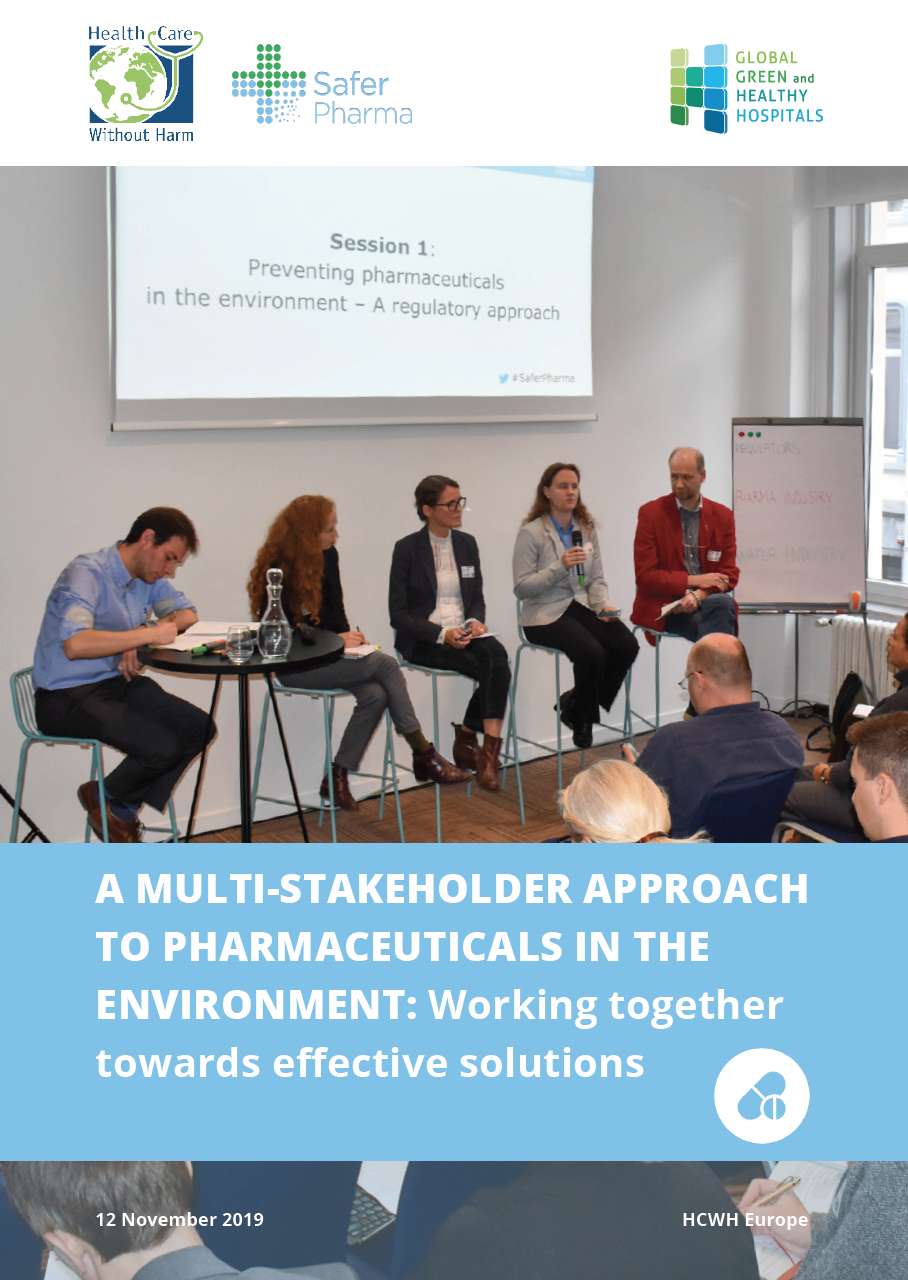Pharmaceutical pollution is increasingly recognised as a threat to ecosystems and human health globally – 771 different pharmaceutical substances have been detected in the environment worldwide. As global consumption of human and veterinary medicines increases, this problem will only get worse.
Pharmaceuticals can enter the environment at all stages of their life cycle: manufacturing discharges, excretion during use, and improper disposal. Once in the environment, pharmaceuticals can accumulate in fish, livestock, and vegetables as well as enter our drinking water.
Access the workshop report here
On 12 November 2019, Health Care Without Harm (HCWH) Europe brought together experts from EU and international institutions, national ministries, the healthcare sector, industry, civil society, and academia to discuss strategies, best practice, and legislative frameworks to tackle pharmaceutical pollution.
Pharmaceuticals in the environment are closely linked to the development and spread of antimicrobial resistance (AMR) – a global health threat that is already responsible for an estimated 33,000 annual deaths in Europe alone.
The workshop A multi-stakeholder approach to pharmaceuticals in the environment was kicked off by an interview with Alistair Boxall, Professor of Environmental Science at the University of York (UK), who coordinated a global monitoring project, which detected dangerously high levels of antibiotics in rivers around the world.
“Antimicrobials are of pressing concern, but there are other molecules we should be thinking about in terms of ecotoxicity and environmental effects. Antidepressants are of particular concern in Europe and North America while antibiotics are potent in Africa, Asia, and South America.”
The workshop featured a variety of presentations, interviews, and discussions with expert stakeholders including an interactive debate on audience suggestions to tackle pharmaceuticals in the environment such as an environmental labelling, an ERA database, legally binding action plans, or using procurement as a driver for change.
Learn more about the discussion in this comprehensive workshop report – including links to featured presentations.

